Wildfire smoke map: Which US cities are forecast to be impacted by fires burning in Canada
The hundreds of wildfires burning in Canada are continuing to cause poor air quality conditions for millions of residents in the U.S.
On Thursday, the National Weather Service issued air quality alerts for at least 20 states from Minnesota and as far south as Georgia and Alabama. The unhealthy air quality alerts also extends to the Northeast including all of New York state and New Jersey.
The worst of the smoke on Thursday morning was blanketed over Wisconsin, forecasts show.
Cities such as Minneapolis, Chicago, Indianapolis, Atlanta and Pittsburgh will affected by smoke throughout the day, forecasts show.
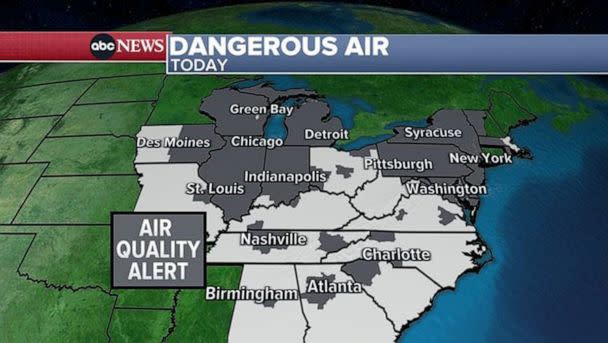
The smoke will linger over the Great Lakes, the Ohio Valley and into the Appalachians on Thursday. By the afternoon, regions from Detroit to Atlanta and east to Washington, D.C., and near Philadelphia will be affected, but the haze is not expected to be as heavy as it was earlier in the week.
MORE: Wildfire smoke live updates: Air quality alerts issued in 20 US states
An air quality alert was issued in New York as a precaution but the poor air quality is not expected to affect New York City. It will likely stay in western New York, Pennsylvania and southern New Jersey, forecasts show.
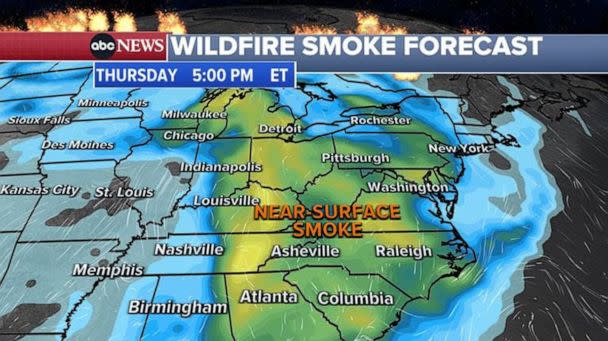
On Friday morning, smoke will remain over the eastern Great Lakes, from Detroit to Ohio, Pennsylvania, western New York and down to Virginia and the Carolinas.
The smoke will begin to dissipate by Friday evening, with lingering effects on the East Coast from New York to the Carolinas, forecasts show. The unhealthy air quality will be mostly diminished by the weekend.
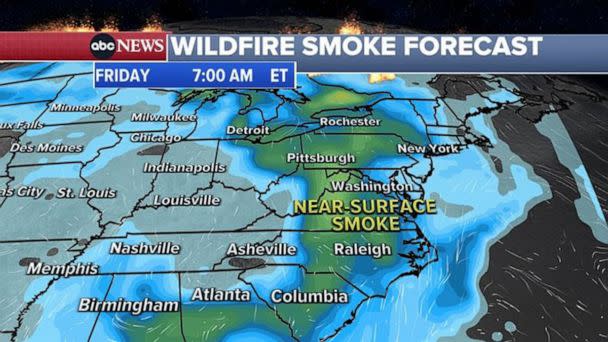
Smoke from the nearly 500 wildfires burning in Canada has been making its way to the U.S. for more than a month after an unprecedented start to the season in which a record 19.5 million acres has already burned. Canada has also broken its record for annual wildfire smoke emissions.
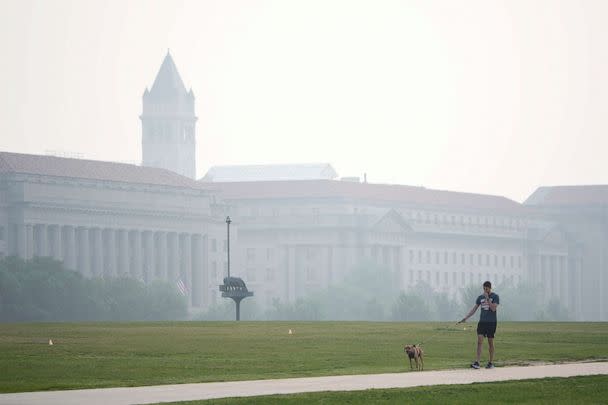
There is no end in sight for the wildfires due to dry conditions and extreme heat in the region.
MORE: Canada breaks record for annual wildfire smoke emissions
Some regions in the Midwest measured at the lowest air quality in the world on Tuesday morning, including regions surrounding Minnesota, according to IQAir.
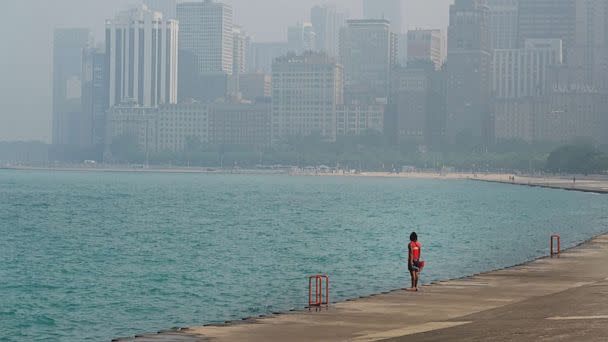
Chicago air quality hit the "very unhealthy" category on Tuesday afternoon as the Air Quality Index soared to 250. Any number over 100 is considered unhealthy for sensitive groups, and 250, or "Code Purple," is considered very unhealthy for all groups.
Once the AQI reaches 151 and above, breathing the polluted air could cause a host of symptoms -- even in healthy people with no preexisting conditions -- including weakening the immune system and causing damage to the body, including the lungs and heart.
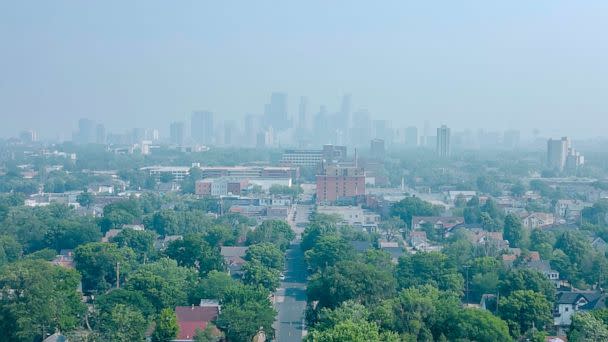
Exposure to concentrated amounts of PM2.5 can cause short-term effects such as irritation of the eyes, nose and throat; coughing, sneezing and shortness of breath, and long-term effects such as worsening of conditions including asthma and heart disease, according to the U.S. Environmental Protection Agency
Wildfire smoke map: Which US cities are forecast to be impacted by fires burning in Canada originally appeared on abcnews.go.com
